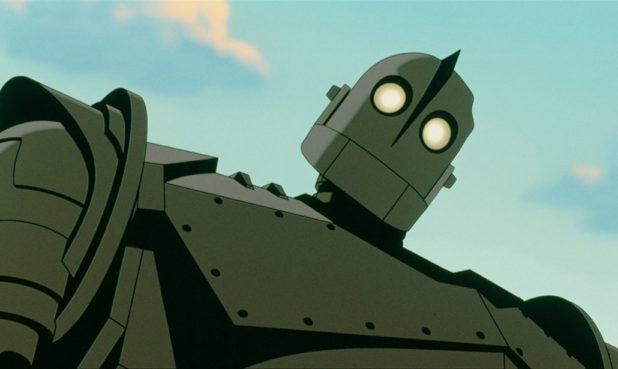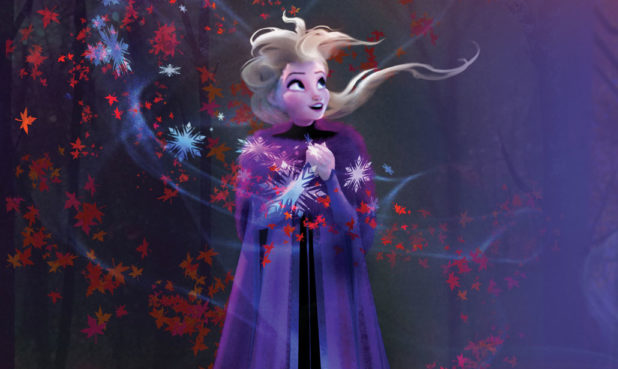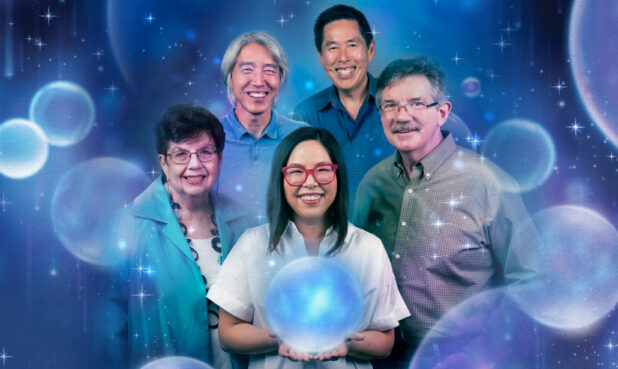It’s been six years since Wreck-It Ralph introduced two loveable characters—gentle giant Ralph and pint-sized dynamo Vanellope von Schweetz—and together, they saved Litwak’s arcade. As the first Disney sequel in recent years, revisiting these characters brings both opportunities and challenges—keeping the concept fresh and making sure the story remains true to the duo’s evolving friendship.
In Ralph Breaks the Internet (Nov. 21), directed by Rich Moore and Phil Johnston, the steering wheel from Vanellope’s arcade game, Sugar Rush, breaks and Litwak doesn’t think it’s worth spending the money to buy another one from ebay. Vanellope’s life as she knows it is about to change but Ralph decides the two should go to ebay and get the steering wheel themselves. What follows is an adventure through the Internet that tests their friendship and, despite Ralph’s best intentions, sets loose a virus that threatens to destroy the World Wide Web.
Inside the Web
One of the biggest challenges at the outset of story development was designing the location itself. “What does the internet look like?” says Josie Trinidad, Head of Story (with Jim Reardon). The team needed to visually conceive this amorphous entity and create a physical world that filmgoers could relate to. Early on, story artist Steven Markowski researched the Internet and shared his findings in a very detailed presentation.
“It was great because he started to use computer jargon that could then be inspiration,” she says. The idea of data encapsulated in a little packet, for example, would inspire the transportation method for Vanellope and Ralph.
“The best way to figure out how something might look on the internet was to just ask ourselves what would we do right now in the human world and how can we then personify it,” she says, but adds that the characters aren’t technologically savvy so it’s “your mom’s or grandma’s approach.”
When Vanellope and Ralph first arrive to the Internet they’re anxious to find ebay. In real life you’d Google it, in the movie they needed to personify a search engine. This concept led to a character called KnowsMore who runs the search bar. Orignally, the story team wanted to create the experience of a click hole—“I went to look for ballet tights and then somehow I ended up buying tickets for a concert in Romania,” jokes Trinidad. The idea ended up getting cut but they incorporated a humorous autofill gag instead.

“Despite how amazing or funny or well designed a character or sequence might be, if it doesn’t fit into the overall context of the movie then it’s useless,” says Trinidad. “When I was a story artist, I was all about my scene but then I realized as head of story you’re also supposed to be looking at the broader picture and seeing if it’s even worth it for someone to animate or design those characters if it’s not contributing to the overall story.”
Nailing down the story was both difficult and beautiful, she says, “you don’t always know if you’re headed in the right direction and screenings can reveal underdeveloped plot points that need to be addressed.” In fact, the department of 15 artists produced almost 300,000 drawings, boarding and re-boarding, until they hit upon a story “that everyone can relate to, that felt very true to our characters and true to ourselves as filmmakers.”
It’s been six years since Wreck-It Ralph introduced two loveable characters—gentle giant Ralph and pint-sized dynamo Vanellope von Schweetz—and together, they saved Litwak’s arcade. As the first Disney sequel in recent years, revisiting these characters brings both opportunities and challenges—keeping the concept fresh and making sure the story remains true to the duo’s evolving friendship.
Glitch Perfect
Throwing Vanellope and Ralph into a new environment—the Internet—came with a series of challenges for the effects department.
“One thing that we really stress is creating logic for the world,” says Cesar Velazquez, Head of Effects Animation. The team needed to establish, for instance, how people travel around the Internet or how they convey messages.
Inspired by the idea of “packets of information” they envisioned a capsule that transports users. “The capsules are these mechanical things that just form around the users,” says Velazquez.
They also researched how electricity moves through a wire then examined WiFi and electromagnetic waves travelling through the air. “This led to a dramatic wave or pulse that would push them—kind of like surfing it—which is sort of analogous to what happens when electricity or data moves through a cable or air,” he says.
Creating a vehicle for movement was only the beginning. “How do you visualize different ideas so the audience understands things like a virus or a glitch or firewall?” asks Velazquez.
A glitch already played an integral plot point in the original film. Vanellope’s character had two kinds of glitches: one when she’s nervous, like a hiccup, and another glitch, almost like a superpower, that transports her where she wants to go. The film’s new renderer, Hyperion, allowed the effects team to update her glitch to a more refined and polished version.
But it was also critical to the story to differentiate between Vanellope’s glitch and those caused by a virus. In the film, the Internet is represented as a large metropolis with different websites and apps represented as buildings. The team wanted to visually show a website crashing without mimicking the destruction of a real building.
“What does it mean if a Website is crashing? How is that conveyed visually?” says Velazquez. Coming up with a solution was a technical challenge requiring multiple tests and updates to the pipeline. “We’re showing data traveling, you’ve got chromatic aberrations, this staccato motion—visual cues to say it feels like a building crashing but there are other visual elements to say it’s a glitch that’s crashing it.”
In order to achieve this effect, the team integrated a destruction pipeline from Industrial Light + Magic. They also had to build a system that could apply the effects to any geometry. Velazquez says he considers this large-scale glitch one of his team’s biggest achievements on the film.
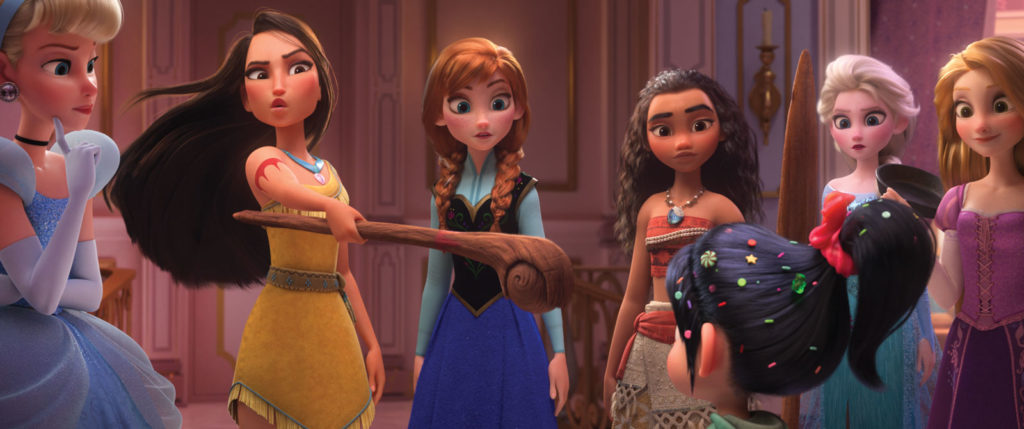 Courtesy of © Disney
Courtesy of © DisneyPrincesses Unite!
In the film, there are more familiar faces than Vanellope and Ralph; the production revisited some of the studio’s most iconic stars—14 Disney princesses.
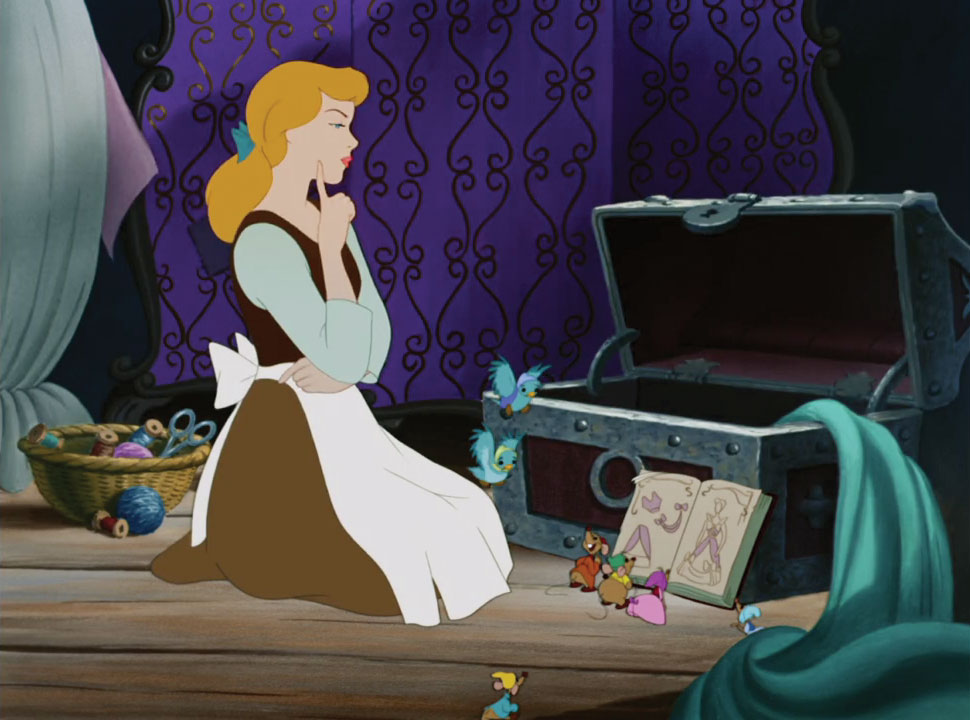
“I felt like had been studying for this moment my entire life,” says Kira Lehtomaki, Head of Animation (with Renato dos Anjos), who counts Sleeping Beauty and The Little Mermaid as major influences in her career. Of course, translating 2D characters into a CG world held its own set of challenges in order to stay true to the original characters while also updating them for an Internet world. Ami Thompson, Art Director, Characters, and her team re-imagined Internet versions of all the princesses—including those who were initially CG characters.
“It kind of gave us this freedom to unify them in terms of making them all feel like they live in the same world,” says Lehtomaki.
For added support, they turned to Hand-Drawn Animation Supervisor Mark Henn who has worked on more than half of the original characters, including Ariel, Belle, and Tiana. He would provide drawovers for the animators to make sure the team was being authentic to the character’s movements. They brought back most of the original voices and asked the actresses to chime in on the action, asking them questions like: What would Ariel or Jasmine do in this modern-day situation?
“They all had such terrific insight,” says Lehtomaki. “We tried to sort of infuse that into the movement.”
Lehtomaki also scoured all the original films analyzing hand gestures and expressions. “We wanted every pose [to] be reminiscent of the original movies—maybe it wouldn’t be immediately recognizable but it feels familiar,” she says. For example, in the original film, Cinderella often taps the side of her cheek with her finger—it’s her thinking pose. Sure enough, the same pose makes a cameo as Cinderella listens to Vanellope.
“We think about the whole tableau,” she says. “And so you have to make sure that the movements of the characters that are not supposed to be the central focus of the scene are more subtle.”
Usually the artists are animating one or two characters but in the princess sequence they were managing 15 (Vanellope plus the 14 princesses). With so many iconic characters in one room, the team had to figure out how to block each one’s movement to work with the narrative. Lehtomaki’s solution? Walk to the Disney store and buy action figures so the team could physically make sure the movement made logical sense and maintained continuity.
Change of Pace
It isn’t often that a trip to the racetrack is part of your job description, especially when you work in animation. But for Nathan Detroit Warner, Head of Cinematography, Layout, learning to maneuver a racecar was just one aspect of research for the dynamic car chase between Vanellope and a character named Shank that takes place in an online game called Slaughter Race, set in a pseudo-post-apocalyptic wasteland.
The directors described the scene to Warner: Vanellope and Ralph need to steal Shank’s car in order to sell it and earn enough money to pay for their ebay purchase of the Sugar Rush steering wheel. Vanellope drives off with Shank in close pursuit, they try to best each other until one wins. The actual specifics were left to the layout department.
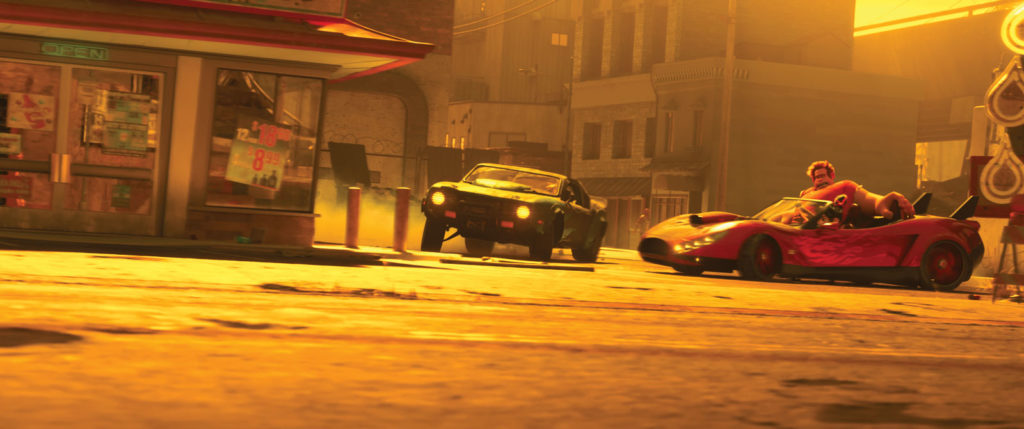
Warner wanted the sequence grounded in reality so he compiled a 20-minute reference reel with clips from movies, such as The Bourne Identity, The Man from U.N.C.L.E., and Baby Driver.
Though the action could serve as inspiration, Warner says, the pacing would never work in animation—“our shots often are less than a second and those are 30 second shots.” Nevertheless, he and his team were up for the challenge.
Warner broke down the action into seven distinct plot points then began blocking each move. Mapping it out on paper wasn’t always enough so his production supervisor brought in a bag of Hot Wheels. The team also brought in Jeremy Fry, the stunt choreographer for Baby Driver, and peppered him with questions about whether the action was realistic.
Basing the sequence in reality, says Warner, “adds jeopardy, it gives you tension and stress—including the way that the camera is held. That is what you’re used to when you’re watching live action.”
Rather than stylize the action from a camera view—which is what they do 95 percent of the time, according to Warner—they took a live action approach and mounted nine cameras onto Shank’s car, seven onto Vanellope’s and littered the streets with different styles of cameras.
For a three minute sequence, they captured more than 100 minutes worth of data, he says. “We were covering it from every which way imaginable.” The result is most likely one of the fastest-paced, thrilling car chase scenes in animation so far.
The Color of Emotion
Similar to the original film, Ralph Breaks the Internet takes the characters into several different “worlds” from Litwak’s arcade to the digital metropolis of the Internet to various apps and games.
“Each specific environment has a unique color signature,” says Brian Leach, Director of Cinematography, Lighting. “It was really trying to draw a distinction between those worlds in terms of cinematic style.”
“Vanellope doesn’t really think that what Ralph thinks is the perfect world is her perfect world. So we literally have the sun set during that conversation and you get this sort of juxtaposition of this beautiful sunset as this rift is developing in their relationship.”
Brian Leach
The Internet metropolis is more saturated with a punch of vibrant colors, Buzzztube has a magenta and blue palette while Slaughter Race is defined by a toxic orange look devoid of any blues.
The team was also tasked with reinforcing emotion and the storyline through lighting. For example, when Vanellope and Ralph arrive to the Internet they are surrounded by a bright, cheerful world. “That’s the most optimistic moment of the film,” notes Leach. The friends are just starting their adventure and they are full of confidence that they’ll get the Sugar Rush steering wheel but that’s not the way it happens. There is a dark side to the web.
One challenge for the team was addressing the idea that the Internet never sleeps—it never turns off—so it’s always daylight, explains Leach. “We need to feel time passing and we need to reinforce different moods,” he adds. “Our third act has a motivation for the Internet going dark which gives us that nighttime mood we hoped to reinforce.” The deep web’s green and red palette gives a dark and uneasy feeling that’s almost toxic and contrasts sharply with the bright, buoyant digital landscape.
Another challenge was the sheer geometric complexity of the Internet, says Leach, “giving every site that’s ever existed on the Internet some sort of physical representation…[while also] organizing the scene to direct the viewer’s eye to the specific story point.
For Leach, lighting evokes the emotion of the scene. At the beginning, when Vanellope first realizes that her life is about to change dramatically now that Sugar Rush is broken, she sits atop an arcade game as Ralph starts to cheer her up. “Vanellope doesn’t really think that what Ralph thinks is the perfect world is her perfect world,” he says. “So we literally have the sun set during that conversation and you get this sort of juxtaposition of this beautiful sunset as this rift is developing in their relationship.”
It kicks off the journey, which becomes a test of their friendship. As for the artists’ journey behind the film? It’s always a collaborative adventure.

